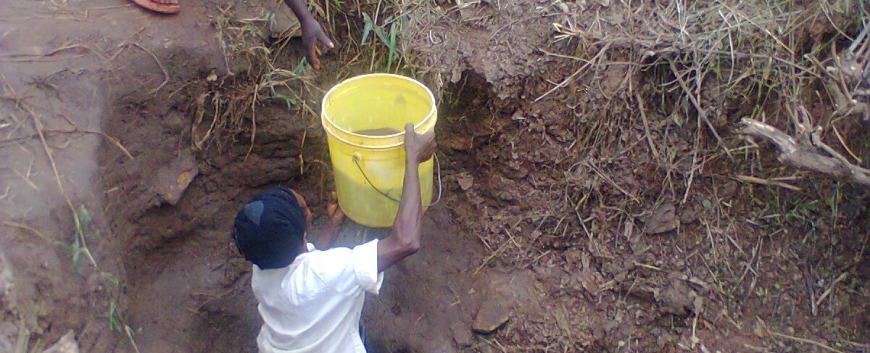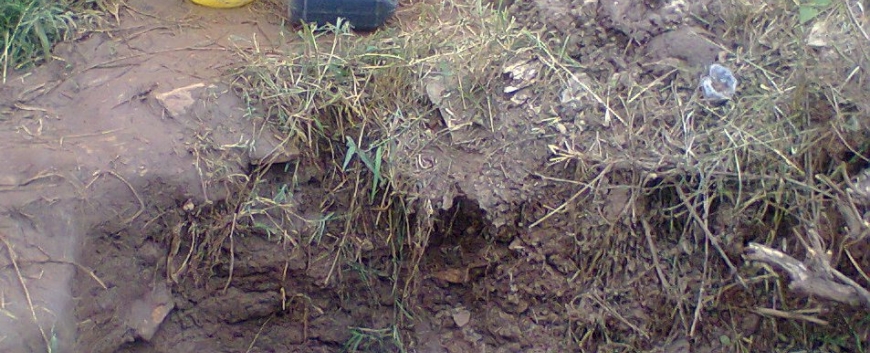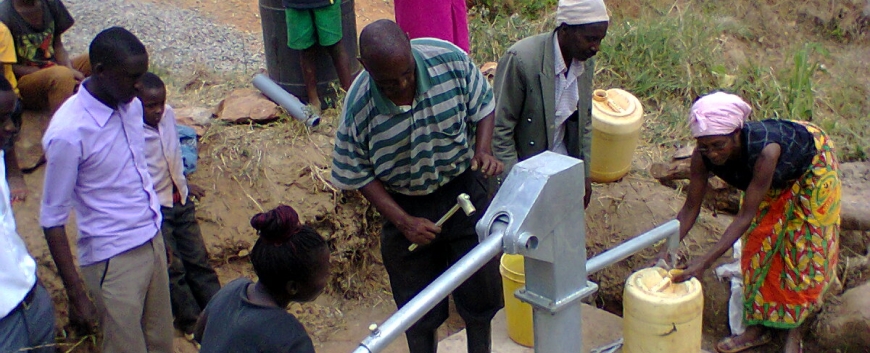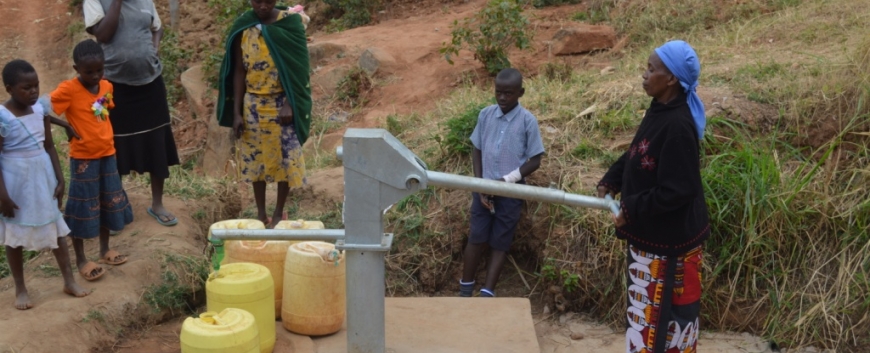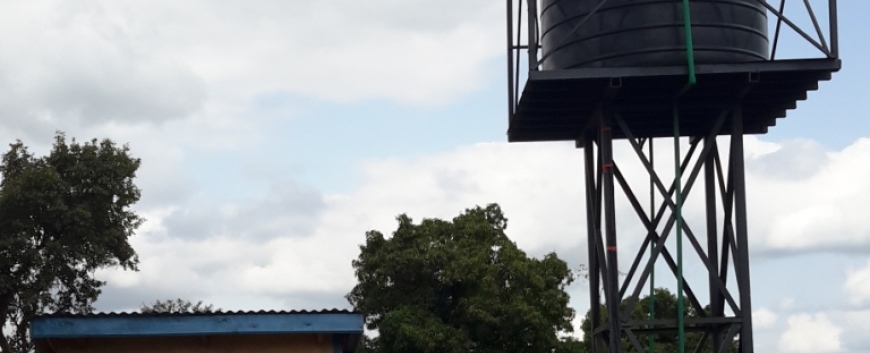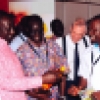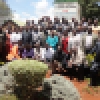UTaNRMP ENHANCES ACCESSIBILITY TO SAFE WATER FOR RURAL HOUSEHOLDS
Kiamaranga shallow well in Siakago, Mbeere north sub-county is the watering point to the residents of Kiamaranga village and is more or less synonymous with hope. Deeply eroded footpaths meander the open fields coming from the various homesteads and converging at the well. Grace Mumbi has trekked the path coming from her home to the well countless times. Today,
Kiamaranga shallow well in Siakago, Mbeere north sub-county is the watering point to the residents of Kiamaranga village and is more or less synonymous with hope. Deeply eroded footpaths meander the open fields coming from the various homesteads and converge at the well. Grace Mumbi has trekked the path coming from her home to the well countless times. Today, however, Grace approaches the well not with the aura of someone approaching a task that will physically drain them but as one would approach a routine chore that has become a simple routine. There’s notable cheer in her gait.
“Some months ago fetching water in this shallow well required at least two adults. One to go down the 3 meters water hole to scoop the water and the other one to lift it up and empty in jerricans. Today all I require is some little effort to pump and voila! My jerican is full in under a minute” explains Grace as she pumps water into a 20liters plastic container. Grace is joined by two others from nearby homesteads who have also come to fetch water. One of them observes, albeit tongue in cheek, that there’s no longer enough time attached to the water fetching-process for ‘chatting and catching up’. Before UTaNRMP’s intervention, the three had a lot of catching up time since they would seek each other out before walking to the well together. With the new hand-pump installed, even children could easily fetch water from the well. The three admit that they nowadays meet more in chamas (women group meetings) or during communal farming than at the well. The sight of the three cheerily walking back home with plastic containers resting on their backs is proof that life has positively changed for them and their community.
About 30Kms to the East of Kiamarang’a village in Gangara area of, Naomi Njiru, a beneficiary of Gakivuri well is all praises for the well rehabilitation works that were undertaken by UTaNRMP.
Naomi, a mother of five, explains that initially getting clean water from Gakivuri well was a task that required rising up as early as 4 O’clock in the morning and rushing to the well before other villagers arrived and muddied the spring.
“At times you would get here at 4 in the morning only to find the water already muddied by those who got here before you. Worse still is when you have to waste a lot of time waiting for the well to discharge enough water that can be scooped” recounts Naomi as she ties a knot on her kikoy preparing to carry a 20litres jerrican and two five liters containers full of water.
Naomi notes that cases of water borne diseases in the area were common since the well was initially open hence prone to contamination. Further, the time spent at the water point has been drastically reduced. It was not uncommon to spend hours on the well due to the many households it serves and the time wasted during peak periods waiting for the water to decant before fetching. This point is echoed by Sylvia Kageni from Nkondi area of Tharaka Nithi county. Sylvia’s village is a beneficiary of a solar-electricity powered borehole that has a 10,000litres reservoir tank to it and two water taps.
“There is currently no time wasted at the water point and the typical squabbles at the water point are now a thing of the past. Unlike before, if you are looking for me at 8.30am on any given day, don’t look for me at the water point. You won’t find anyone there at that time. We’ll all be busy in the farms”
Despite coming from different parts of the Upper Tana catchment area, one thing is agreeably common to these women; they now have easy access to clean and safe water leaving them with more time to engage in other productive activities like farming. All this courtesy of UTaNRMP.
It is undisputable that Water is critical for human survival and development. In highly patriarchal communities like those within the Upper tana catchment region, established patriarchal norms shape gender roles and responsibilities. Outside the sphere of farm production, women in rural areas are responsible for household daily chores like fetching water and fuel wood. This exert an un-even responsibility burden to women and girls especially in cases where access to water is a challenge. It is thus understandable when Grace, Naomi, Sylvia and their fellow rural womenfolk are extremely happy that UTaNRMP has made it easy for them to accomplish one of their routine family obligations.
By June 2017, the Upper Tana Natural Resources Management Program (UTaNRMP) had rehabilitated 18 boreholes, 17 shallow wells and 38 springs within the upper tana catchment region. The project is targeting to rehabilitate and develop 55 more boreholes and 55 more shallow wells by the year 2020 with the aim of ensuring Water resources in the Upper Tana catchment are sustainably managed through Community water development and management.
however, Grace approaches the well not with the aura of someone approaching a task that will physically drain them and eat into their time but as one would approach a routine chore that has become a simple routine. There’s notable cheer in her gait.
“Some months ago fetching water in this shallow well required at least two people, and adults for that matter. One to go down the 2meters water hole to scoop the water and the other one to lift it up and empty in jerricans. Today all I require is some little effort to pump and voila! My jerican is full in under a minute” explains Grace as she pumps water into a 20liters plastic container. Grace is joined by two others from nearby homesteads who have also come to fetch water. One of them observes, albeit tongue in cheek, that initially the three had a lot of catching up time since they would seek each other before walking to the well together. This was however not the case after UTaNRMP installed a water hand-pump and made it easier to fetch water. They nowadays meet more in chamas (women group meetings) than at the well. The sight of the three walking back home while engaged in cheery talk and plastic containers resting on their backs is proof that life has positively changed for them and their community.
About 30Kms to the East of Kiamarang’a village in Gangara area of, Naomi Njiru, a beneficiary of Gakivuri well is all praises for the well rehabilitation works that were undertaken by UTaNRMP.
Naomi, a mother of five, explains that initially getting clean water from Gakivuri well was a task that required rising up as early as 4 O’clock in the morning and rushing to the well before other villagers arrived and silted the spring.
“At times we would get here that early only to find the water already silted and the only option would be to fetch it as it is” recounts Naomi as she ties a knot on her kikoy preparing to carry a 20litres jerrican full of water.
Naomi notes that cases of water borne diseases in the area were common since the well was initially open hence prone to contamination. Further, the time spent at the water point has been drastically reduced. It was not uncommon to spend hours on the well due to the many households it serves and the time wasted during peak periods waiting for the water to decant before fetching. This point is echoed by Sylvia Kageni from Nkondi area of Tharaka Nithi county. Sylvia’s village is a beneficiary of a solar-electricity powered borehole that has a 10,000litres reservoir tank to it and two water taps.
“There is no time wasted at the water point and the typical squabbles at the water point are now a thing of the past. Unlike before, if you are looking for me at 8.30am on any given day, don’t look for me at the water point. You won’t find anyone there at that time. We’ll be busy in the farms”
Despite coming from different parts of the Upper Tana catchment area, one thing is agreeably common to these women; they now have easy access to clean and safe water and there’s more time to engage in other productive activities. Thanks to UTaNRMP.
It is undisputable that Water is critical for human survival and development. In highly patriarchal communities like those within the Upper tana catchment region, established patriarchal norms shape gender roles and responsibilities. Outside the sphere of farm production, women in rural areas are responsible for household daily chores like fetching water and fuel wood. This exert an un-even responsibility burden to women and girls especially in cases where access to water is a challenge. It is thus understandable when Grace, Naomi, Sylvia and their fellow womenfolk are extremely happy that UTaNRMP has made it easy for them to accomplish one of their daily family obligations by making access to clean water much more easy.
By June 2017, the Upper Tana Natural Resources Management Program (UTaNRMP) had rehabilitated 18 boreholes, 17 shallow wells and 38 springs within the upper tana catchment region. The project is targeting to rehabilitate and develop 55 more boreholes and 55 more shallow wells by the year 2020 with the aim of ensuring Water resources in the Upper Tana catchment are sustainably managed through Community water development and management.

